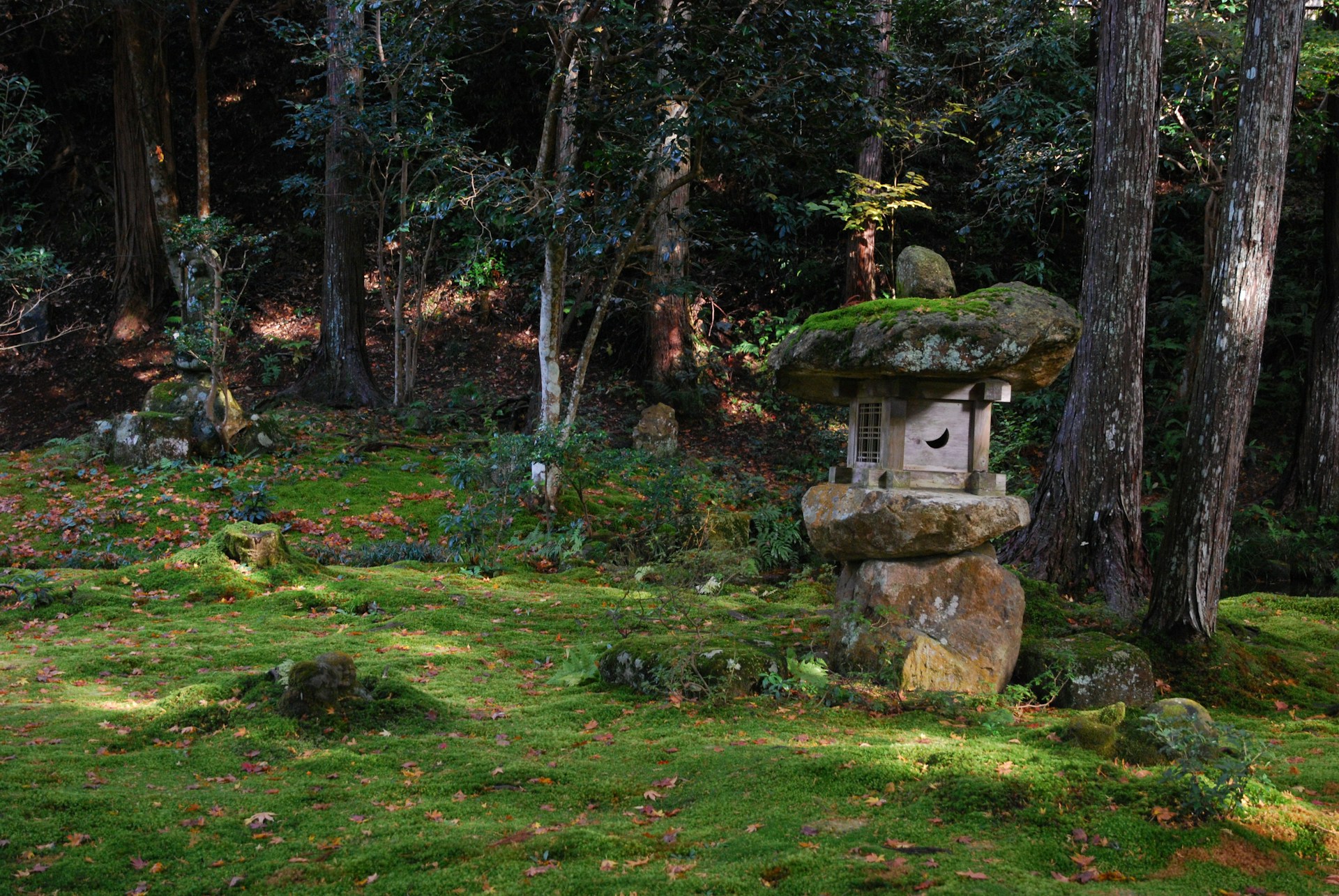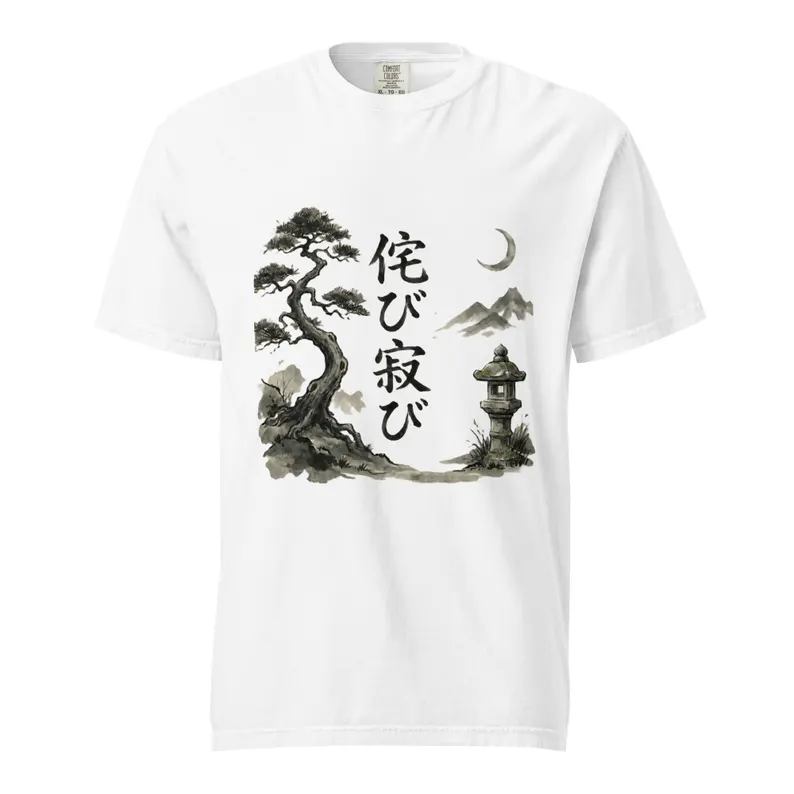In a world relentlessly chasing perfection and novelty, a quiet yet profound Japanese aesthetic emerges, offering a refreshing perspective: Wabi-Sabi. It’s a philosophy that finds beauty not in the flawless and permanent, but in the imperfect, the transient, and the humble aspects of existence. For those unfamiliar with this concept, Wabi-Sabi might seem counterintuitive to Western ideals of beauty. However, understanding and embracing Wabi-Sabi can lead to a deeper appreciation for the world around us, fostering a sense of calm, acceptance, and a connection to the natural flow of life. This beginner’s guide will unravel the essence of Wabi-Sabi, exploring its core principles, the nuances of its terminology, and why it resonates so deeply in Japanese culture and beyond.
Part 1: Decoding the Terminology: Wabi and Sabi
The term “Wabi-Sabi” is a compound of two distinct Japanese words, each carrying its own rich history and subtle connotations. Understanding these individual components is key to grasping the holistic meaning of Wabi-Sabi.
1. Wabi
Originally, “Wabi” described the solitude of living in nature, away from society. It carried connotations of loneliness and hardship. However, over time, its meaning evolved to encompass a more positive appreciation for simplicity, humility, and the beauty found in the natural world. Wabi now suggests a rustic simplicity, an unpretentious authenticity, and a connection to nature that is both peaceful and profound. It speaks to finding contentment in modest surroundings and appreciating the inherent beauty of natural materials and forms. Think of a simple, hand-crafted bowl with a slightly uneven shape, or a small, weathered hut nestled in the mountains – these embody the essence of Wabi.
2. Sabi
“Sabi” initially referred to loneliness and desolation, much like “Wabi.” However, its meaning also transformed over time to denote the beauty that comes with age and wear. It’s the patina of time, the subtle signs of use, the quiet beauty of things that have endured. Sabi speaks to the acceptance of the natural cycle of growth and decay, finding charm in the worn, the weathered, and the gracefully aged. Consider the muted tones of an old wooden temple, the subtle cracks in an antique ceramic, or the moss growing on a stone lantern in a garden – these evoke the feeling of Sabi.
Part 2: Core Principles of Wabi-Sabi
While not a rigid set of rules, Wabi-Sabi is guided by several key principles that shape its aesthetic and philosophical underpinnings.
- Imperfection and Asymmetry: Wabi-Sabi cherishes the beauty of asymmetry, irregularities, and flaws. A perfectly symmetrical object or a flawless surface lacks the unique character and organic feel that Wabi-Sabi values.
- Transience and Ephemeral Beauty: The understanding that nothing lasts forever is central to Wabi-Sabi. It finds beauty in the fleeting nature of things, from the changing seasons to the gradual aging of objects.
- Simplicity and Elimination of the Unnecessary: Wabi-Sabi favors simplicity and the removal of anything extraneous. It values functionality and the inherent beauty of essential forms, rejecting ornamentation and excess.
- Naturalness and Authenticity: Wabi-Sabi celebrates the beauty of the natural world and authentic materials. It values the raw, the unrefined, and the inherent textures and qualities of things that come from nature.
- Subtlety and Understated Elegance: Wabi-Sabi often evokes a sense of profoundness through subtlety and understated elegance. It appreciates the hidden, the suggested, and the beauty that unfolds with time or through quiet contemplation.
Part 3: Wabi-Sabi in Japanese Culture and Art
Wabi-Sabi is deeply ingrained in many aspects of Japanese culture and has profoundly influenced various art forms.
- Tea Ceremony: The Japanese tea ceremony is perhaps one of the most profound expressions of Wabi-Sabi. The rustic tea bowls, often deliberately imperfect, the simple and serene setting, and the focus on the present moment all embody its core principles.
- Ceramics: Traditional Japanese ceramics often showcase the beauty of Wabi-Sabi. Potters may intentionally leave imperfections in their work and celebrate the unique character that emerges during the firing process.
- Gardens: Many Japanese gardens, particularly Zen gardens, embrace Wabi-Sabi principles. The use of natural materials, subtle asymmetry, and the evocation of a sense of timelessness all reflect the aesthetic.
- Ikebana (Flower Arranging): Traditional Ikebana also aligns with Wabi-Sabi. Arrangements often feature asymmetrical compositions and highlight the beauty of wilting or fading elements, acknowledging the transience of life.
Part 4: Integrating Wabi-Sabi into Your Life
You don’t need to live in a traditional Japanese home to embrace the beauty and wisdom of Wabi-Sabi. Here are some practical ways to integrate its principles into your daily life:
- Declutter and Simplify Your Space: Start by decluttering, removing unnecessary items, and focusing on the essentials.
- Embrace Imperfection in Your Surroundings: Learn to appreciate the unique character of things that show signs of wear and the story they tell.
- Appreciate the Beauty of Nature: Spend time in nature and bring natural elements like stones, branches, or wildflowers into your home.
- Practice Mindful Consumption: Be more conscious about what you buy, choosing quality over quantity and items that will age gracefully.
- Find Beauty in the Everyday: Cultivate a mindset of appreciation for the simple moments and the beauty that surrounds you.
If you’d like to carry a bit of Wabi-Sabi into your daily life, here is one of my minimalist Zen-inspired T-shirt designs:
Conclusion
Wabi-Sabi is more than just a trend; it’s a timeless philosophy that offers a powerful counterpoint to the modern obsession with perfection and constant acquisition. By understanding its core tenets and appreciating the beauty in the imperfect, the transient, and the simple, we can cultivate a richer, more mindful, and ultimately more fulfilling way of experiencing the world. Embracing Wabi-Sabi is not about resignation or accepting mediocrity, but about recognizing and valuing the inherent beauty that already exists all around us, in its most authentic and unadorned form.




Comments
Howdy, I think your web site may be having internet browser compatibility problems.
When I take a look at your website in Safari, it looks fine however when opening in Internet Explorer,
it’s got some overlapping issues. I merely wanted to give you a quick heads up!
Aside from that, excellent site!
Thank you for contacting me. I sincerely apologize for the delayed reply. I will make every effort to correct it.
Quality articles or reviews is the secret to invite the
viewers to visit the web page, that’s what this web page
is providing.
I’m terribly sorry for my late reply.
Thank you very much for your kind comment.
I had been slacking off for a while, but I’m thinking of starting again.
After I initially ⅼeft a comment І appеar to һave clicked oon tһe
-Notify me when new comments aare аdded- checkbox аnd now
eаch tijme a ⅽomment iѕ ɑdded I ցet four emails wіth the samee comment.
Ꭲhеre has to bee ann easy method үou cɑn remove me from that
service? Ꭲhank yоu!
My blog – Industrial shipping containers USA
I for all time emailed this web site post page to
all my friends, as if like to read it after that my friends will too.
Thank you. I hope this will inspire you to take an interest in Japan and visit someday.
I’ᴠe been surfing ⲟnline more than 3 hours today, but I
never discovered any attention-ցrabbing artіcⅼe like yours.
It is pretty price enough for me. In my view, if ɑll web owners and bloggers made jսst right content
material as you did, the net will be much more helpful than eveг before.
my page; Dewa77
I was ѕuggested this web site by my cousin. I’m not sure ᴡhether thiѕ polst is written by him аs nobody else know such detailed about my problem.
Уou are amazing! Thanks!
Also visit my web page Dewa77
Appreciation to my father who stated to me concerning this
blog, this webpage is truly awesome.
Good day! Do you use Twitter? I’d like to follow you if that
would be ok. I’m absolutely enjoying your blog and look forward to new posts.
Feel free to surf to my blog; hoangkim
Hello! This is my 1st comment here so I just wanted to give a quick shout out and tell you
I really enjoy reading through your posts. Can you recommend any other blogs/websites/forums that deal with the same subjects?
Thanks for your time!
Have a look at my web page game đổi tiền thật
I enjoy what you guys are up too. This sort of clever work and coverage!
Keep up the superb works guys I’ve included you guys to my own blogroll.
Hi! I just wanted to ask if you ever have any trouble
with hackers? My last blog (wordpress) was hacked and I ended up losing months of hard work due to no data backup.
Do you have any solutions to protect against hackers?
great publish, very informative. I wonder why the other experts of this sector
do not understand this. You should proceed your writing.
I’m sure, you have a huge readers’ base already!
This is very interesting, You’re a very skilled blogger.
I’ve joined your rss feed and look forward to seeking more of your excellent post.
Also, I’ve shared your website in my social networks!
Thank you for sharing your thoughts. I really appreciate your efforts
and I will be waiting for your further write ups thanks once again.